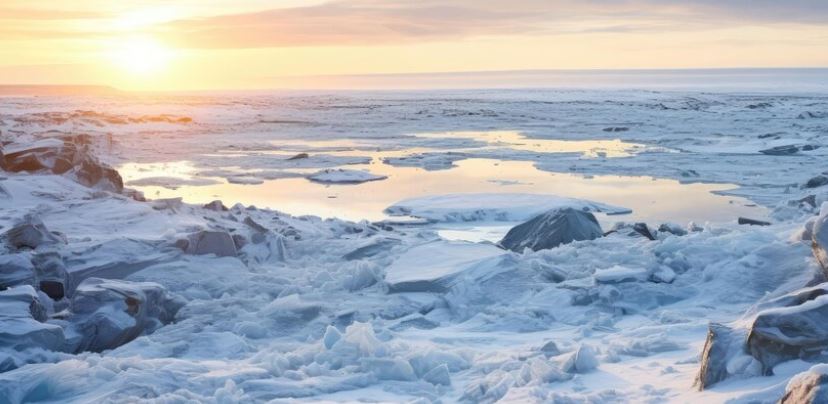Arctic Tundra: A Carbon Time Bomb?
The Arctic tundra, a vast expanse of frozen soil and hardy vegetation, is undergoing a rapid transformation due to climate change. New research suggests that this transformation could have far-reaching consequences for the global climate system. As temperatures rise, microbial activity in the tundra’s soil is accelerating, leading to increased carbon dioxide (CO2) production. This phenomenon, if left unchecked, could trigger a dangerous feedback loop, exacerbating global warming and its associated impacts.
The Tundra’s Microbial Awakening
The tundra, often referred to as a “sleepy biome” due to its slow metabolic rates, harbors vast stores of organic carbon in its frozen soil. However, rising temperatures are awakening the dormant microbial communities within this ecosystem, stimulating their metabolic activity and CO2 production. This research, published in Nature, provides the most comprehensive evidence to date of this concerning trend.
Experimental Warming: Unveiling the Microbial Response
To investigate the impact of warming on microbial CO2 production, a team of 70 scientists conducted a large-scale field study across 28 tundra regions. They employed open-topped plastic chambers to create mini-greenhouses, artificially warming patches of tundra by an average of 1.4 degrees Celsius. The results were striking: the warmed plots experienced a 30% increase in CO2 respiration compared to control plots.
The Role of Nitrogen in Microbial Activity
The study also revealed a nuanced relationship between soil nitrogen levels and microbial CO2 production. In nitrogen-poor soils, warming led to a particularly pronounced increase in CO2 respiration. This is likely due to the increased activity of symbiotic microbes that scavenge for nitrogen to support plant growth. These microbes, while essential for plant health, also release CO2 as a byproduct of their metabolic processes.
Implications for the Global Carbon Cycle
The findings of this study have significant implications for understanding the global carbon cycle and predicting future climate change. The Arctic tundra stores vast amounts of carbon, and its potential to release this carbon into the atmosphere as CO2 could have profound consequences for global warming. While the study’s results suggest a concerning increase in microbial CO2 production, the overall impact on the tundra’s carbon balance remains uncertain.
The Need for Further Research
Further research is needed to determine whether the tundra will become a net source of carbon or remain a carbon sink in the long term. Other factors, such as increased plant growth and photosynthesis, may offset the increased microbial CO2 production. Additionally, the study focused on summer growing season, and the dynamics of carbon exchange during other seasons remain to be explored.
Incorporating Complexity into Climate Models
Understanding the complex interactions between soil microbes, plants, and the environment is crucial for improving climate models. By incorporating data that captures the nuances of these processes, scientists can develop more accurate predictions of the tundra’s response to climate change and its subsequent impact on the global climate system.
Key Learnings
| Key Point | Description |
|---|---|
| Warming accelerates microbial CO2 production in the Arctic tundra. | Experimental warming led to a 30% increase in CO2 respiration in tundra soils, indicating heightened microbial activity. |
| Soil nitrogen levels influence microbial response to warming. | Nitrogen-poor soils experienced a particularly pronounced increase in CO2 respiration, likely due to the increased activity of symbiotic microbes. |
| The tundra’s role in the global carbon cycle is complex and uncertain. | The potential for increased CO2 emissions from the tundra raises concerns about its impact on global warming, but other factors may offset this effect. |
| Further research is needed to understand the long-term consequences. | Studying carbon exchange during other seasons and incorporating nuanced data into climate models is crucial for predicting the tundra’s response to climate change and its impact on the global climate. |

Basant Kumar Sahoo is a seasoned writer with extensive experience in crafting tech-related articles, insightful editorials, and engaging sports content. With a deep understanding of technology trends, a knack for thought-provoking commentary, and a passion for sports, Basant brings a unique blend of expertise and creativity to his writing. His work is known for its clarity, depth, and ability to connect with readers across diverse topics.



